Wir über uns
Die Plantagenet Group ist ein freier wirtschaftlicher Zusammenschluss, der bereits seit über 100 Jahren existiert.
Sie verwaltet unterschiedlichste Vermögen über mehrere Milliarden US$. In diesem Zusammenschluss befinden sich einige große Banken, gewichtige Finanz-Institutionen und bestens bekannte Familienunternehmen.
Weitere Informationen können von Dun & Bradstreet, der internationalen Finanzauskunft, eingeholt werden.
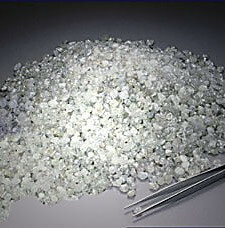
Eines der Schlüsselgeschäfte ist der Aufkauf und die Einlagerung von Rohdiamanten.
Diese Ankäufe werden ausschließlich in Anlehnung an die aktuellen Rapaport Preis- und Discountlisten wie auch unter größtmöglicher Verschwiegenheit getätigt. Die Ware muss als erstes nachgewiesen werden. Zürich ist der bevorzugte Abhandlungsort und andere Orte können nur bei garantierbaren, zufriedenstellenden Sicherungsmechanismen in Erwägung gezogen werden.
Jede erdenkliche Bezahlungsart ist vorstellbar, aber der tatsächliche Geldfluss wird erst vollzogen, wenn die Ware sicher am vereinbarten Ankunftsort eingetroffen ist.
Ankaufanforderung
Die einzelnen Rohsteine sollten 3 Karat und größer, in der Farbe weiß oder nahe zu weiß und von schleifwürdiger Qualität sein. (Bis zu 20 % kleinere Steine innerhalb eines Angebots werden jederzeit akzeptiert. Wir kaufen jedoch weder Industriequalitäten noch Sammlersteine)
Wir garantieren, dass die Gruppe jederzeit in der Lage wie auch gewillt ist, solche Lieferungen ohne obere Mengenbegrenzung anzukaufen sofern
- sich die Angebote preislich an den Rapaport Preis- und Discountlisten orientieren, sowie einem Rough : Cut Faktor 1:3 entsprechen und
- die Angebote nach Zürich, FTZ Malca Amit oder nach Vereinbarung gebracht werden und
- die Bewertungen von unseren erfahrenen Gutachtern durchgeführt werden.
Die Bezahlung erfolgt unmittelbar jeweils nach Bewertungen und Einigung im Preis nach Ihren Wünschen. Wir bitten vor ersten Lieferungen uns ein aussagefähiges Manifest mit Ihren Preisvorstellungen zu schicken. Passen Ihre Vorstellungen zu unseren Anforderungen laden wir Sie nach Zürich zum Treffen ein.
Keine Vorabzahlungen!
Executives

Q. Robert Dean – Senior Executive – Chief Mandate
Robert Dean ist ehemaliger Direktor einer Sheffield Steel Plant mit besten Verbindungen zur Metall- und Energiebranche.
Er hat an der Glasgow University studiert. Er ist Mitglied des Institute of Chartered Accountants of Scotland wie auch mehrerer international hoch geachteter schottischer Clubs mit weltweiten vertraulichen Verbindungen unterschiedlichster Themen und wird noch heute aus seiner ursprünglichen Branche um Rat und Unterstützung gebeten.
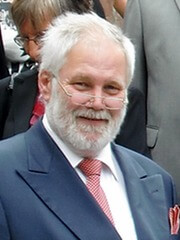
R. Edgar M. Glocker – Senior Executive – Chief Officer Agent and Broker Department
Edgar Glocker ist ehemaliger Direktor eines genossenschaftlichen Namibianischen Farbedelsteinexporteurs mit besten internationalen Verbindungen wie auch zu europäischen Schleifereien.
Er hat an der TU München studiert. Er ist Mitglied zahlreicher Vereinigungen unterschiedlichster Themen und über diese Kontakte in der Lage unterschiedlichste Geschäfte vertraulich zu platzieren.
Jeder der Executives ist noch in seinen Themen als International Consultant tätig.
Das Agent und Broker Department ist eine Organisation außerhalb der Plantagenet Group selbst und liefert – gleichwertig den traditionellen Lieferanten – der Group zu.
Neben den traditionellen Geschäften der Group sind eine Vielzahl vertrauliche, persönliche Dienstleistungen durch die Senior Executives der Group möglich.
Nachruf
The late William J. Shearman – Former Chief Executive – Chief Banking and Financial Officer
In 1967, William Shearman, who died on 17.June 2005 of cancer aged 67, was confronted by the plight of homeless people in the East End of London. He thought that the existence of homelessness in a rich western country was an »obscenity«. The result was that he founded the charity, Crisis.
He was a reforming Conservative and humanist who founded the homeless charity »Crisis«.
Anerkannte Agenten in und für Afrika

John M. Riggs
PO BOX 958, SEAPOINT, 8051 Cape Town, SA
+27 (0) 78 004 2200
John.M.Riggs
moc.liamg@sggirmnhoj
English speaking so as Afrikaans
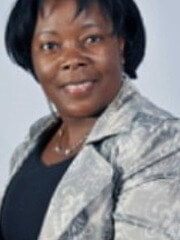
Kaeno Jejamaije Mujoro
3218 Martin Neib Street, Okahandja-NAMIBIA
+264 81 7484460
Jejamaije.Mujoro
moc.liamg@orojum.oneaK
English speaking so as Afrikaans and various African Local languages

Andrae Fuchs
Spenglerstraße 2, 4072 Alkoven, Austria
+43 664 1358469
andrae.fuchs
ta.xmg@shcuf.eardna
German, English speaking
Feel free to contact any of our recognized Agents – who each is running a successful business her- and/or himself – to discuss any deal you and/or the Plantagenet Group might be interested in.
All discussions will be held under utmost confidentiality, attended and concluded by a Senior Executive.
Evaluation of Rough Diamonds begins with sorting!
The very first is to separate the rough diamonds from the waste material, so as to wash and to clean.
From there they are ready to be sorted into three different varieties:
Bort – opaque stones, the lowest quality of diamonds are crushed to produce the dust used for polishing cut diamonds
Industrial – unsuitable gem diamonds, valued for their hardness and thermal conductivity. Industrial diamonds are still good quality.
Yellow is the preferred colour as yellow stones tend to be harder. They are used for drill bits and other cutting and grinding tools.
Cuttables – gem quality diamonds destined for the Jewellery industry, are then sorted into three further categories:
- Fancies: stones with colour other than those in the GIA D-Z colour scale. Fancy coloured diamonds are extremely rare and valuable and will be individually assessed to produce the finest finished stone with the smallest loss of weight.
- Smalls: Stones smaller than 1ct. Smalls generally go for cutting into mêlée or accent stones.
- Sizes: stones larger than 1ct. Sizes are divided into five further subcategories as follows.
The common basis in the trade is:
All Things Being Relative!
Remember, you should only pay for a rough stone, a price which is relative to the value of the polished stone (or stones) which can be recovered from it.
For evaluating a piece of rough to market price, it should be set out in a table format (for example – Excel) according to the approximate lower colour, clarity and stone shape!
Start by testing that the stone is really a diamond.
Mohs scale does not lie! So scratch your stone with a diamond pin. (Being used to mark glass by scratching in Laboratories) Diamonds will not show scratches so if any scratches appear, you will know it is something different.
Remember where there is value there can be falsifications too.
The evaluation procedure is as follows:
Sizes are divided into five further subcategories.
-
Decide on shape of the rough diamond
Sawable One represents a nicely bordered octahedron or a dodecahedron that can easily be sawn and will yield two polished stones, which will give a recovery weight of min. 50% + even “x”
Sawable Two is a slightly irregular octahedron (sharp edged!) or a dodecahedron (long!), or a glassy octahedron, or a normal shaped octahedron with a gletz/spot near to side which can normally be polished out, and will yield two polished stones, which will give a recovery weight of min. 45% + even “x”
Makeable One represents an irregular octa-/dodecahedron (slightly flattened shaped stone) that has formed a natural table (two or three point), or a broken octa-/dodecahedron (topped/four point) that will yield one polished stone with a recovery weight of min.33% + even “x”.
Makeable Two represents a cleavage (broken piece) or a longish stone of less determinable shape that will yield one polished stone with a recovery weight of min. 30% + even “x”.
Flats represent macles (a flattish triangular stone with a twinning seam around the edge), chips (broken pieces) and flat stones which have sufficient depth to yield one polished stone with a recovery weight of 20% + even “x”
So you may speculate already on the recovering size of the polished stone (or stones) which can be recovered from it not regarding specific individual internal qualifications.
-
Decide on the fluorescence of the rough diamond
Faint, medium, strong very strong into the blue or into the yellow.
-
Decide on the colour of the rough diamond
Put the rough stone against a flat white background and compare the white of the background against the white you see through the rough diamond. A colourless diamond will still be white against the flat white background.
Exceptional white is absolute colourless which covers the GIA determination in the polished stones D, E, F
Rare white is colourless which covers the GIA determination in the polished stones G, H
Slightly tinted white is a small hue to the yellow which covers the GIA determination in the polished stones I,J,K
Tinted white is a hue to the yellow which covers the GIA determination in the polished stones L, M.
-
Decide on the purity of the rough diamond
This is to find relevant inclusions: e.g. crystalline inclusions, carbon inclusions, pinpoints, clouds, fractures, cleavages (feathers, bearding, fissures), some kinds of structure phenomena, poor transparency of the diamond.
Use a tweezer with 4-5 fingers to pick the rough stone and put it on a milk glass pane give poor light from the bottom up and inspect with a magnifier by twisting the stone.
If you cannot determine anything because you cannot see into the diamond because of frosty surface or very poor transparency, do not buy! (Beside it’s not more than 1% of the parcel which does not affect any significant changes in price.)
-
Weigh the rough diamond so as to measure its diameter.
Please consider the factor: e.g. a 1.0 carat polished stone is in ideal cut range of a girdle-diameter at 6.5mm. Such 6.5mm for the polished are requiring a bit more space in the rough.
Carat is weight but cut dimensions are in Millimeter, Diameter as Depth over all.
By above discussed characteristics you may calculate already the price of the rough stone (stones) in your hands.
Look up the price in the Rapaport Price List for a polished stone you have determined. Please recognize the small frames within the blocks, e.g. polished colours D,E,F within 1 frame so as G,H so as I,J,K , equivalent in the clarities and evaluate on the poorest co-ordinates within such frames.
Generally, each stone is evaluated separately but if you have several stones with the same characteristics in the same weight range, you can evaluate them as a group.
After you have looked up the price for your determined polished stone in the Rapaport Price List, you know the relative price to your rough stone. Relative - for there is not simply a Price List existing there is a Discount List too. That is the Market Price for your polished stone is varying within a range of up to 45% Discount (sometimes even more, depending on the ultimate consumers’ demand), so as you need to calculate further - there is a basic rule in the trade, which you please keep in mind:
The price of the rough diamond must not exceed (significantly) the 1/3 part of the polished stone’s price (or stones) which can be recovered of it.
That is: You deduct up to 45% of the figure in the Rapaport Price List (prices are in Hundreds of US$/ct) and divide it by 3 so you get a reasonable price of the rough diamond in your hands. If you need the price per carat you need to divide once more by the stone’s weight in carat.
If you do not have the Rapaport Lists look up prices asked on relative polished stones in the internet at international sellers of polished stones, e.g. 77diamonds, London. Remember to deduct inclusive services such as VAT in such prices.
Evaluation starts with sorting, that’s the key to get accurate prices in the rough!
Our requirements to your offer
We welcome your Manifest made out on an Excel Spreadsheet, as follows
| Pos | Carat range | shape | colour | $/ct | ct pos | price pos |
|---|---|---|---|---|---|---|
| 1 | ||||||
| 2 |
which we check and after satisfactory we will invite you. Please do not forget to add a photo of that you intend to deliver showing in daylight stones incl. a ruler.
Please consider we require for a first delivery, not more than 500 – 1,000 ct and prefer such stones in the range being representative for your source.
Vermittlungsgeschäfte
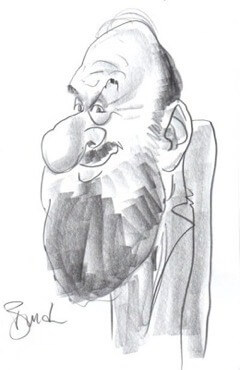
des Agent und Broker Department für unsere Vermittler und Zuträger
Q. Robert Dean
- Metalle
- Energie
- Residency Applications
+44 141 339 9074
qrdean
ten.klatklat@sereladrevir
Sketch at Institute of Chartered Accountants Scotland (ICAS) reception
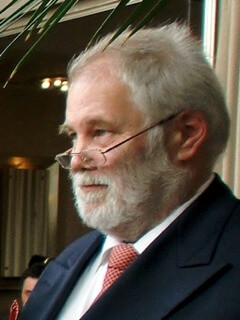
R. Edgar M. Glocker
- Ankauf von Rohdiamanten außerhalb des Ankaufsspektrums der Group unter Weitergabe an befreundete Schleifer
- sehr bedingt Farbedelsteine
- Gemälde, Bilder
- Banking
+49 7950 800 9160
r.e.m.glocker
ed.emohenilno@rekcolgmer
Allgemein:
Deutschsprachige Anliegen bitte ausschließlich an REM Glocker!
Impressum
Verantwortlich für den Inhalt
R. Edgar M. Glocker
Schleifweg 1
91625 Schnelldorf
+49 7950 800 9160
+49 321 2126 7635
ed.emohenilno@rekcolgmer